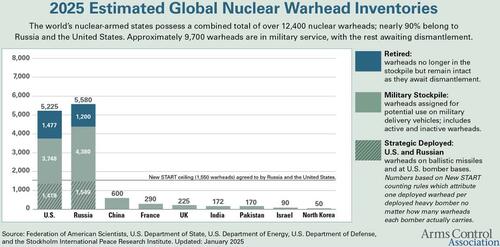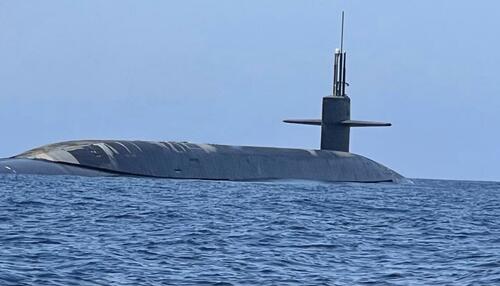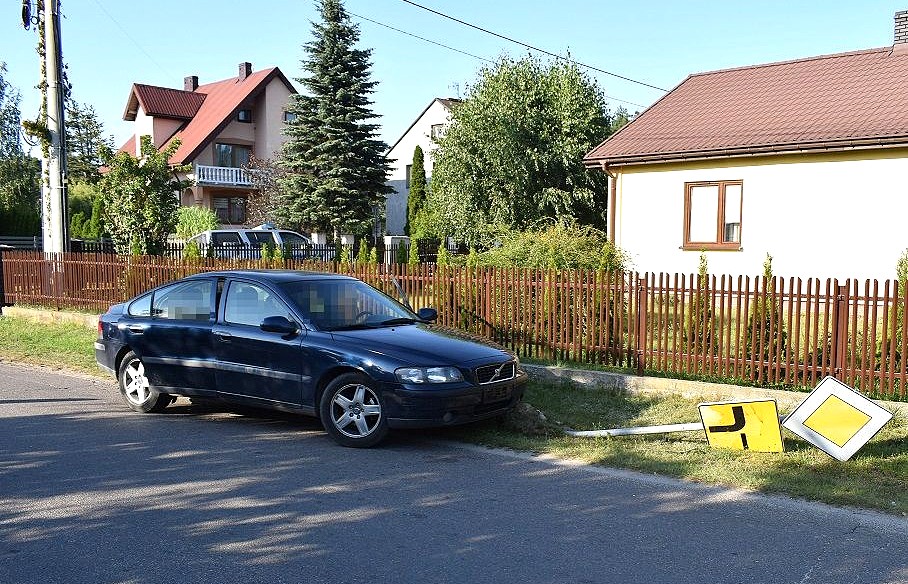
Для ядерного сдерживания требуются только десятки боеголовок, а не тысячи.
Брайан МакГлинчи из Stark Realities
В течение следующего десятилетия правительство США планирует потратить почти 1 триллион долларов на свой ядерный арсенал. - с фактической стоимостью, которая наверняка будет даже выше, чем это. Огромные расходы частично обусловлены огромными размерами американской коллекции оружия Судного дня, которая включает в себя примерно 3700 развернутых или запасенных ядерных боеголовок, не считая еще 1500, которые якобы «уходят на пенсию» и ожидают демонтажа.
Хотя американцы были вынуждены думать, что разумно поддерживать такой большой арсенал, Идея о том, что тысячи боеголовок необходимы для сдерживания ядерной агрессии, основывается на ошибочном мышлении о природе сдерживания.. В то время как оборонные подрядчики и военные бюрократии, обогащенные статус-кво, скажут вам обратное, правда заключается в том, что достаточный арсенал ядерных боеголовок может быть измерен не тысячами, а всего лишь десятками.
Во время холодной войны две последовательные доктрины руководили стратегией ядерной войны. Сначала последовало массовое возмездие, которое основывалось на угрозе непропорционального, разрушительного ядерного ответа на обычную или ядерную агрессию. Это уступило место взаимному гарантированному уничтожению (MAD), при котором любая ядерная атака гарантированно перерастет в точку, где обе страны будут полностью уничтожены.

Обе доктрины разделяют основополагающую предпосылку — эффективное и надежное сдерживание требует способности полностью уничтожить противостоящую страну. Это неправильный критерий. Сдерживание достигается Способность навязывать невыносимый уровень ответного уничтожения— о стране, которая рассматривает возможность нанесения первого ядерного удара — порог, намного ниже, чем приграничное уничтожение.
Во время Второй мировой войны Россия и Китай понесли около 20 миллионов жертв среди гражданского населения и военных. Те же самые непостижимые цифры смертности, которые охватывали несколько лет во Второй мировой войне, могут быть достигнуты всего за несколько минут только с 20 современными ядерными боеголовками. 15 поражающих российских городов и только пять поражающих более густонаселенные города Китая, по расчетам профессора Университета Мэриленда Стива Феттера.
Если Соединенные Штаты предпочтут отказаться от морально отвратительного удара по населенным пунктам с небольшим военным значением (то есть городам, похожим на Хиросиму и Нагасаки), второй удар вместо этого может испарить экономику противника, нацеливаясь на производство электроэнергии, нефтеперерабатывающие комплексы и жизненно важные порты (хотя даже эти ядерные атаки приведут к гибели гражданского населения в огромных масштабах не только от взрывов, но и от экономического разрушения). Вот, Феттер вычисляет, что 100 взрывов будет достаточно.
Жертвы и разрушения, связанные с любым из этих двух сценариев нацеливания, которые преследуют некоторый уровень социального опустошения - так называемый «контрценностный таргетинг» — значительно превосходят то, что любой иностранный правитель считал бы допустимым, предполагая, что даже одного или двух боеголовок второго удара будет достаточно, чтобы удержать противника от нанесения первого удара.
Отметим, что такой подход к сдерживанию, который фокусируется на силе возмездия и нанесения «невыносимых» разрушений, не требует от противников высокого морального характера. Не имеет значения, относится ли противоборствующий правитель к своим гражданам с любящим сочувствием или развращенным безразличием. Правители в конечном итоге руководствуются личными интересами. И ни один лидер не может ожидать, что его власть переживет ядерную авантюру, которая приведет к испарению городов или незаменимых экономических активов в его собственной стране. (В самом деле, не может быть никакой «силы», чтобы держаться.) Как писал политолог Кеннет Вальц в эпохальном документе 1990 года, в котором пропагандировалась миротворческая ценность ядерного оружия, одновременно доказывая, что небольших арсеналов достаточно, «Правители любят продолжать править. "
Учитывая эти реалии сдерживания, размер ядерного арсенала противника не имеет никакого отношения к соответствующему размеру американского. Пока две или более стран имеют силы второго удара, сравнивать их бессмысленно. Написал Вальс. «Если ни одно государство не может начать обезоруживающую атаку с высокой степенью уверенности, сравнение сил становится неуместным... Помимо определенного уровня возможностей, дополнительные силы не обеспечивают дополнительного покрытия для одной стороны и не представляют дополнительной угрозы для других. "
В отличие от таргетинга на контрценности, «Нацеливание на контрсилу» Цель состоит в том, чтобы нанести военное поражение, уничтожив большой, разнообразный набор военных целей, таких как ракетные шахты, базы бомбардировщиков и подводных лодок, объекты командования и управления и обычные силы.

Контрнацеливание привело к тому, что и Америка, и Россия накопили гораздо большие арсеналы, чем любая другая страна, обладающая ядерным оружием. Помимо повышенного общего риска, связанного с обеспечением безопасности, транспортировкой, обслуживанием и обучением этих больших объемов боеголовок, Взаимное нацеливание на платформы доставки ядерного оружия в соответствии с доктриной контрсилы поощряет первые удары. — начал опасаться, что первый удар противника сделает собственное оружие непригодным для использования.
Помимо повышенного риска просчетов во время кризисов и случайных взрывов во время мира, Огромный ядерный арсенал Америки угрожает национальной безопасности таким образом, что не имеет ничего общего с грибными облаками. Подталкивая Соединенные Штаты дальше по пути к финансовой катастрофе. Как предупреждал в 2010 году тогдашний председатель Объединенного комитета начальников штабов Майк Маллен, «наиболее значительной угрозой для нашей национальной безопасности является наш долг». Его заявление прозвучало, когда государственный долг составлял всего около трети от его нынешних 36,8 триллионов долларов.
Из триллиона долларов, которые будут потрачены на ядерное оружие до 2034 года, 460 миллиардов будут потрачены на программу «модернизации», которая охватывает боеголовки, ракеты, силосы и подводные лодки. Из этого, Пентагон планирует потратить $120 млрд на замену существующих наземных МБР Minuteman III МБР Sentinel производства Northrop Grumman. В прошлом году ВВС уведомили Конгресс о том, что программа Sentinel будет стоить на 37% больше, чем предыдущая оценка, и на ее реализацию уйдет на два года больше. Если история закупок оружия Пентагоном является каким-либо руководством, мы можем рассчитывать на большее количество таких объявлений в ближайшие годы.
Рассматриваемая в контексте сдерживания второго удара программа Sentinel особенно раздражает. Учитывая их фиксированные местоположения в спутниковых шахтах, МБР наземного базирования представляют собой наиболее уязвимую часть триады ядерного оружия., в который также входят бомбардировщики и ракеты подводного базирования. Иными словами, именно нога делает меньше всего для того, чтобы убедить ядерного противника в том, что Соединенные Штаты обладают гарантированным потенциалом для нанесения второго удара. Единственный ударный потенциал, который имеет значение. В то же время наземные МБР являются магнитом для вражеских ракет, и одно исследование предполагает, что ядерные удары по МБР США могут убить 300 миллионов человек по всей Северной Америке.
 МБР наземного базирования — как эта, рядом с Монархом, Монтана — являются наиболее уязвимой частью ядерной триады. (перенаправлено с «Moose Radio 94.7»)
МБР наземного базирования — как эта, рядом с Монархом, Монтана — являются наиболее уязвимой частью ядерной триады. (перенаправлено с «Moose Radio 94.7»)В феврале президент Трамп выразил беспокойство по поводу продолжающейся разработки нового ядерного оружия:
«У нас нет причин создавать новое ядерное оружие. У нас их уже так много. Вы можете уничтожить мир 50 раз, 100 раз. Мы создаем новое ядерное оружие, а они создают ядерное оружие. "
Замечания Трампа прозвучали, когда он выразил заинтересованность в открытии новых переговоров по контролю над вооружениями с Россией и Китаем. Это благородное стремление, но Когда возможность нанесения второго удара - это все, что нужно Соединенным Штатам для обороны, можно привести доводы в пользу одностороннего пути к рациональному и экономному ядерному сдерживанию. Особенно, если учесть опасный дестабилизирующий характер огромного арсенала, созданного для контрнаведения.
«Нет убедительного военного или стратегического обоснования для связи размеров ядерных сил США с размерами других ядерных держав», — пишет Феттер. «До тех пор, пока Соединенные Штаты располагают достаточным количеством боеголовок для сдерживания и реагирования на ядерные атаки, не должно иметь значения, сколько оружия имеется у других стран. " Это не значит, что следует сбрасывать со счетов риск-снижение стоимости гораздо меньшего российского арсенала.
 Подводные лодки с баллистическими ракетами, такие как USS West Virginia, делают все возможное, чтобы обеспечить противнику возможность нанесения второго удара. (ВМФ США)
Подводные лодки с баллистическими ракетами, такие как USS West Virginia, делают все возможное, чтобы обеспечить противнику возможность нанесения второго удара. (ВМФ США)Увы, любой шаг к значительно более тонкому арсеналу ядерных боеголовок США столкнется с яростной оппозицией со стороны тех, кто извлекает выгоду из сегодняшнего акцента на численное превосходство. Статус-кво является ярким примером принципа "концентрированных выгод и рассредоточенных расходов". " Благодаря налогообложению и инфляции стоимость поддержания и модернизации арсенала в размере 1 триллиона долларов в течение следующих 10 лет будет распределена между сотнями миллионов американцев, включая многих, кто еще не родился. По прогнозам, за тот же период правительство США потратит 90 триллионов долларов, и эти расходы будут лежать под радаром обычных американцев, исключая крупную политическую оппозицию.
С другой стороны, финансовые выгоды получают относительно небольшое число заинтересованных сторон, от производителей оружия до бюрократии Пентагона и Министерства энергетики. Использование концентрированных выгод побуждает эти заинтересованные стороны яростно защищать статус-кво.Развертывание мощного арсенала влияния, который включает лоббистов, предвыборные взносы, обещания рабочих мест в 50 штатах и сотнях округов Конгресса, а также финансовое спонсорство аналитических центров национальной безопасности, которые управляют политикой.
В то время как те, кто обогащен чрезмерным ядерным арсеналом Америки, имеют преимущество, Статус-кво настолько опасен и расточителен, что американцы всех политических взглядов должны объединиться, чтобы бросить ему вызов.
Stark Realities подрывает официальные нарративы, разрушает общепринятую мудрость и разоблачает фундаментальные мифы по всему политическому спектру. Читайте больше и подписывайтесь бесплатно на starkrealities.substack.com

Мнения, выраженные в этой статье, являются мнениями автора и не обязательно отражают взгляды ZeroHedge.
** **
Тайлер Дерден
Сат, 05/03/2025 - 22:10















